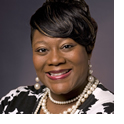
A Note from Ujima Donalson,
POD Director
Maybe you were once wary of entering your credit card information online or couldn't fathom needing anything other than a pen and paper during a meeting. Nowadays, though, you may be dependent on household goods arriving regularly on your doorstep or sitting in the conference room with your trusted tablet at your fingertips. Technology changes us and, before we know it, we can't even imagine how we lived without a particular device or advance. Even though it might not seem like it today, I imagine we'll feel the same after the HR/Payroll Modernization (HR/P) project has been completed.
As Dan Kaufman points out in this issue's Leadership by the Book, many leaders aren't comfortable with ambiguity. I think that admitting “I don't know” may be especially unpalatable to those of us in higher ed, but we may need to say that a little more than we're used to in the coming months. HR/P will require patience and perseverance, but we can position ourselves and our teams for success.
Joni Kirk, the HR/P communications manager, provides great tips in her Leading Change Starts With You article in this issue of the Leading Edge. I have a couple of my own to add to hers. A great tip for any change, large or small, is communicate, communicate, communicate. Encourage communication about HR/P and accept that the only response you have at a given moment might be “I'm not sure” or “I don't have an answer for that right now.”
Another tip is to keep your eye on the prize. Replacing our outdated payroll system is an incredible boon for the University and one of the things that will help keep our institution at the forefront. Yes, HR/P will feel disruptive and challenging at times. Change is hard. But if we're ready to accept the inevitably of this change and fly by the seat of our pants when we need to, I have no doubt when we look back on this our current payroll system will seem as antiquated and foreign to us as life without email and the Internet.
With HR/P, the need for organizational readiness can't be overstated. Organizational readiness can be approached in many ways, for example through town hall meetings and discussions, training classes and workshops, coaching and mentoring, or organizational restructuring. For optimal return, each of these activities requires a commitment to change and a commitment to the individuals making those changes.
Throughout the HR/P process, I will be looking for ways to position my team for success, and I encourage you to do the same. We will all get to the other side of this—how we manage the change, ourselves, and our teams is in our hands.


